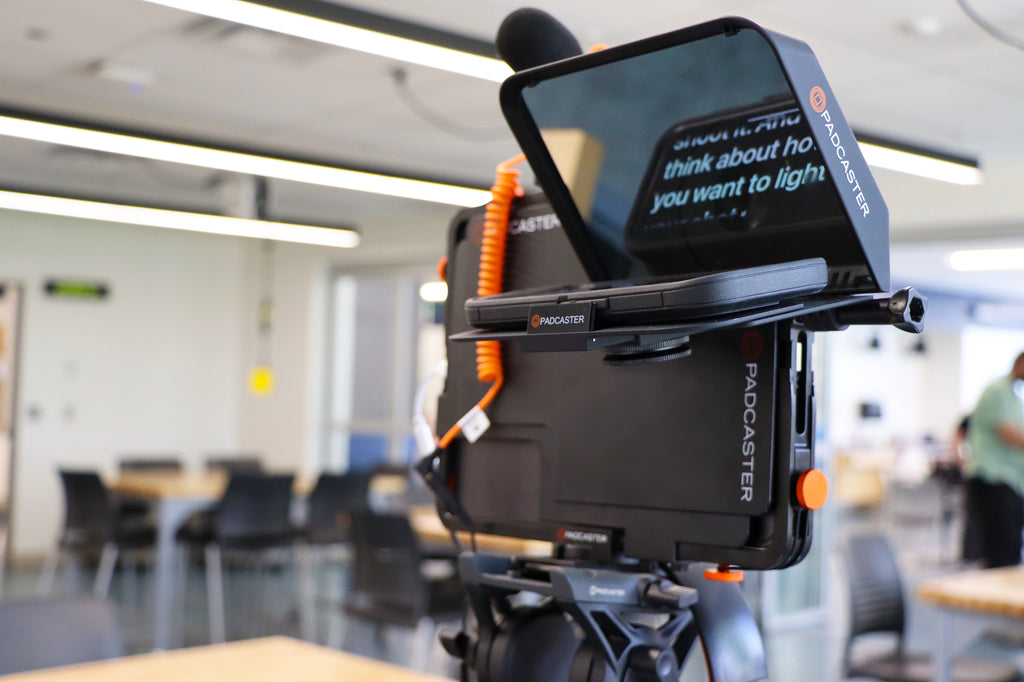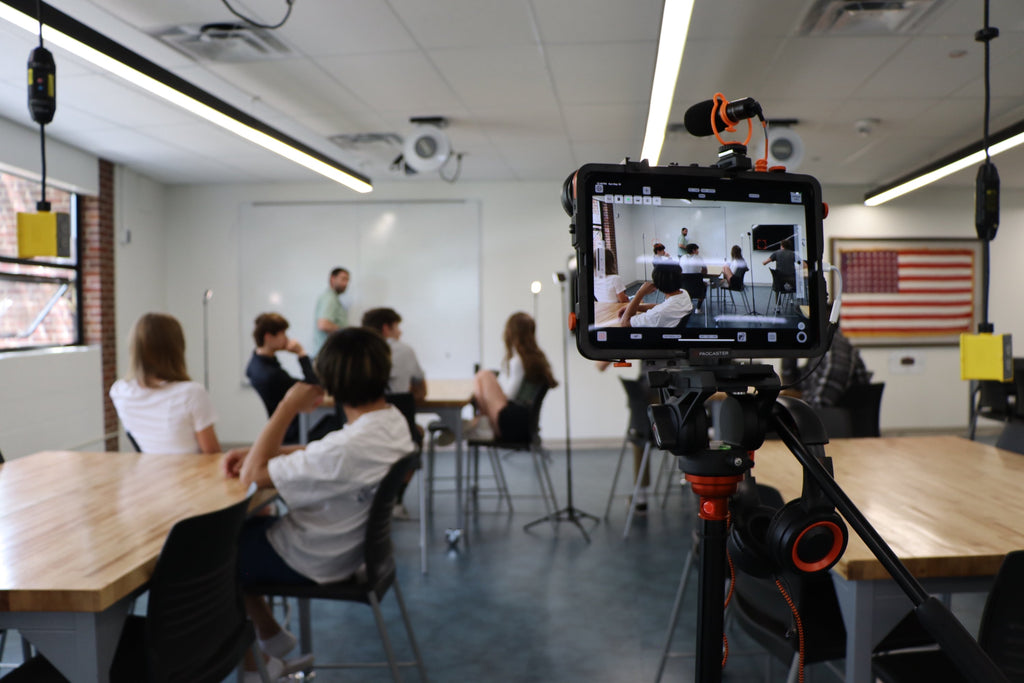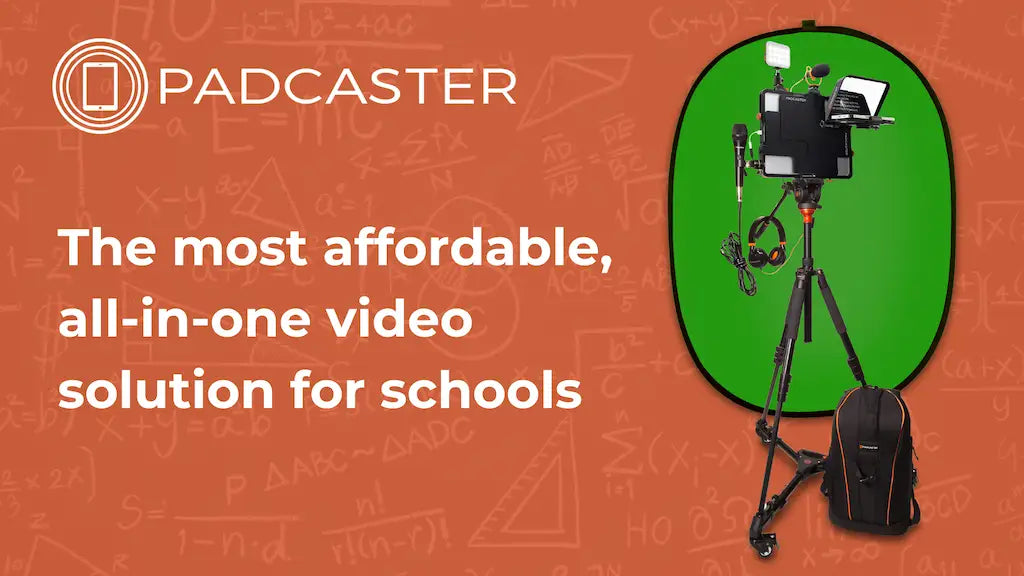
Regardless of if you plan to have an in-person graduation this year or not, adding a virtual component is a great way to include loved ones who can't attend in person. This may seem daunting at first, but with a little preparation and troubleshooting, you can seamlessly livestream graduation. Here are five tips to help you successfully livestream your commencement ceremony!
CREATE A CHECKLIST
It’s no secret that the more you prepare for an event the more smoothly it will go. We recommend you write down a checklist ahead of time to guide the preparation process. The following tips will help inform that checklist.
PREPARE YOUR AUDIENCE
It is important to confirm that your audience is ready, particularly friends and family that may be less tech-savvy. Send out information well in advance so that everyone knows how things are going to work beforehand. For some, this might be the first live stream they’ve ever tuned into, so they may need more thorough instructions and ample time to figure it out or ask for help.
The day of the event, we recommend you “Go Live” with a graphic before the ceremony is set to actually start. This way attendees will know that they’ve come to the right place before the ceremony starts. Most live streaming programs will allow you to upload an image that you can use as a title card, or if you’re using Zoom or another video conferencing service you can go ahead and launch the meeting early and share your screen. See below for an example:

DON’T NEGLECT YOUR AUDIO
Too often, creators focus largely on the image quality while ignoring audio. The reality is that oftentimes people have a higher tolerance for a bad picture than bad sound. Make sure that audio is at the forefront of your mind when planning your stream. Consider the kind of event you’re streaming and ask yourself a few questions - what mic is best for what I’m trying to do? Is one mic enough or do I need multiple mics and a mixer to control them individually? If I’m using an online program like Zoom, Skype, Google Hangouts or Facetime, is there a way to get consistently good sound from everyone? (Short answer is, yes). It’s a lot to think about but you’ll thank yourself later when everyone can hear clearly and easily. We’ve listed a few different microphone options below:
MICROPHONE RECOMMENDATIONS:
- Unidirectional Mic: This microphone is designed to pick up sounds in front of it while ignoring the sounds behind it. The ideal distance of this microphone is around four to six feet. This microphone is the perfect wireless solution in a studio situation, but may not be the best in an environment with a lot of background noise.
- Stick Mic: If you’re in a noisier environment or your speaker is more than six feet away from the filming device you might consider using a stick microphone rather than a unidirectional microphone. The 12-foot cable will allow your speaker to be further away from you but still have the mic close to their mouth.
- Lapel Mic: A lavalier microphone is an omnidirectional microphone ideal for stage, lecture halls, conference rooms, or any venue where an unobtrusive and lightweight mic is needed. At 22 feet long, the cable on the lavalier microphone is almost double the length of the cable on the stick microphone, so if you need your speaker to be very far away from the camera, this might be your best bet.
CONSIDER INCORPORATING PRE-RECORDED CONTENT
Even if the bulk of the ceremony is live, you can still weave in pre-recorded segments. For example, play a short student-created video commemorating the year. This way you’re seeing more students' faces on screen and students can create something they’re truly proud of. A mix of live and pre-recorded content is a great way to keep your audience engaged.
To simplify things, it also might make sense to have certain speakers pre-record their presentations. Spend some time thinking about what makes sense to do live and what is more appropriate to pre-record.
FIND A WAY TO HIGHLIGHT EACH STUDENT
Graduation should feel like a personal experience for every student. Of course, how this is accomplished largely depends on the grade level and size of the graduating class. This can be done through a quick slideshow, for example showing a photo of each student and a quote that they submitted, similar to a virtual yearbook. Consider having students submit their own slide that they design themselves. You can even have multiple students per slide if you’re concerned about time.
If a large number of students are graduating, consider splitting them up. You can have one graduation ceremony with everyone, and later on have more personalized ceremonies in smaller groups. Try to find a natural way to divide students. For example, at the elementary school level, have one large ceremony, and then split everyone up based on classrooms.
TEST, TEST, TEST
The more work you can do in advance the better, and testing is no exception. When you test, make sure you’re on the same wifi network that your event will ultimately be on - if you can’t you run the risk of a great test where everything works perfectly, and the real livestream running into major unforeseen bandwidth problems, firewall problems, or other “ghosts in the machine” problems - we’ve arrived on sites to find that the venue “improved” their WiFi without telling us, and the same event that had run seamlessly for years suddenly had to be scrapped because of a problem we neither created nor one we could solve before the event was to go live. Have someone on a different wifi network view the test and confirm that it looks and sounds good. If you’re having multiple speakers during the ceremony, make sure to test everyone. A full run-through is appropriate whenever possible. Remember, even if it looks and sounds great at the livestream site, that’s no guarantee that your viewers are seeing what you see or hearing what you hear. Testing a stream before the event and having people tune in on their computer or mobile device is the only way to truly check. The stream destination for your audience is the last link of the chain and it’s vital that you can ensure that what you intend to stream is making it there successfully.
Padcaster transforms your iPad or smartphone into an all-in-one mobile production studio so you can create professional-quality videos from your home or anywhere else. Whether it’s for distance learning, telecommuting, remote broadcasting or livestreaming -- Padcaster will help you produce high-quality content wherever you are. If you have had an event that has been moved online due to COVID-19 such as a wedding, religious service, graduation, or ‘gathering’ of any kind, Padcaster wants to help you! Fill out the form below to get in touch with one of our sales consultants!
Need More Information?
Fill out the form here to get in touch with a member of the Padcaster Team.


